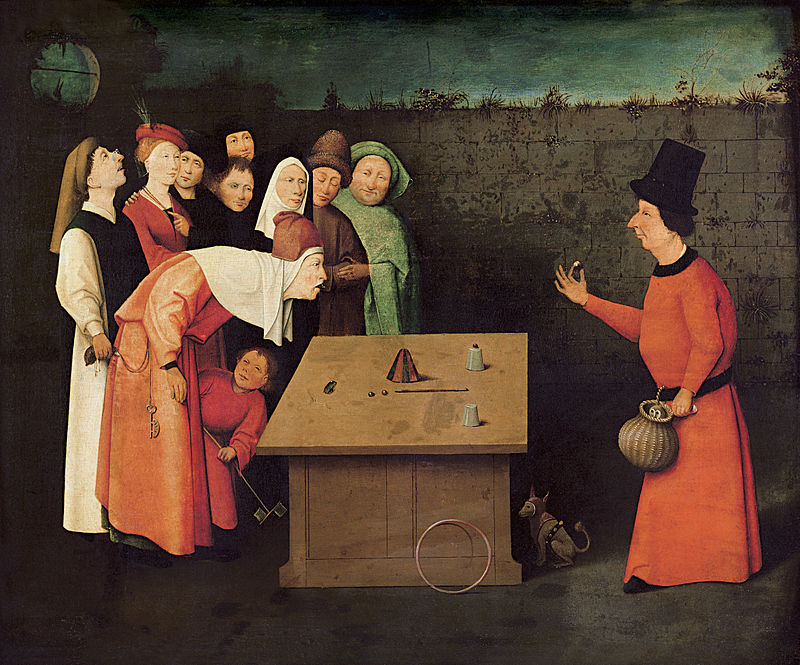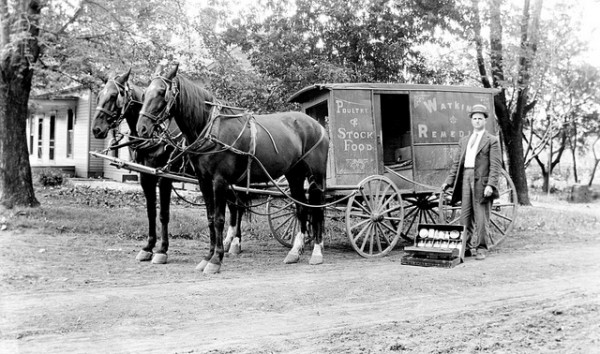
Lucas Ospina escribe sobre las diferencias entre los curadores y los mercaderes de ocasión, en el ArtReview summer 2015 issue
:
All curators are public relations specialists, but are all PRS curators? As the social dynamics of the artworld evolve, and the set theory of public relations engulfs all kind of trades – from infomercialist to auctioneer – a very narrow space, such as this column, can be dedicated to thinking about differences between curating and public relations before a happy ending signals the end of all distinction.
1 The curator writes essays, not introductions. / PRS practise all types of advertising, across whatever format is required, and measure its results in column inches.
2 The art exhibition is only incidentally pedagogical. / There are pedagogical exhibitions.
3 The curator does not explain that which is already evident in the work but mentions what is obvious when nobody dares to signal it. / PRS trust neither the work nor the observer. In their eagerness to persuade, they fill the void with explanations that people don’t need or ask for.
4 The curator is questioning and reckless; she puts her life – and her job – at risk and into play. / PRS are art’s diplomatic corps.
5 The curator learns her trade in staging the art exhibition; she has the same tactile instinct as the collector. / PRS are trained in balance sheets, equations and indicators.
6 The curator doesn’t distinguish what she says from how she says it. / PRS place ‘contents’ and ‘budget’ under different headings on the spreadsheet.
7 In the art exhibition, as in a candy store, form is the essential question, the initial impulse that leads to the glucose of content. / There are exhibitions that confuse form with subject: in a large space, more substance, in a small space… more substance (full).
8 The curator is a parasite who lives off citing others: reordering and creating new constellations of subjectivities. / PRS, despite their name, don’t have relations so much as transactions.
9 The curator philosophises with a hammer and works her texts with the meticulousness of a watchmaker. / PRS write with the same diligence as traffic police filling in the boxes of a penalty notice.
10 The curator doesn’t read; she rereads. / PRS collect press headlines.

11 In art exhibitions the curator doesn’t recreate history, she creates it. / PRS make anecdotal use of history: a child of limited resources was touched by art! This piece was restored! Etc.
12 The curator doesn’t confuse the art exhibition with the catalogue. / PRS makes catalogues from the exhibition and from the catalogues make coffee-table books.
13 The art exhibition is a means of putting ideas into play. / There are exhibitions that are the end of an idea.
14 The curator is as transgressive as the art: she transforms types of work after initially classifying them. / PRS feverishly seek categories and boundaries of classification.
15 The curator puts art before life: she prefers the work to its author. / PRS disguise the work with the face of its maker: they cross-dress the work before presenting it to society.
16 The curator is a child of her time but lives days, months, years and even decades ahead. / PRS never stop talking on mobiles with unlimited data plans, minutes and international roaming in their fugitive operations for the cultural squatting of new art scenes.
17 The beginning and end of the art exhibition is language. / The beginning and end of some art exhibitions is the cocktail reception.
18 The curator answers to language. / PRS answer to their superiors.
19 The curator accompanies the art exhibition in sickness and in health. / PRS marry and divorce the art depending on the success or failure of exhibitions.
20 The curator knows that no work of art is without defects. / PRS make perfection a religion: they conceal, disguise and ignore the potential for dissonance.
21 The curator does not stage political exhibitions but makes them politically. / PRS, elite courtesans on the serving staff, are submissive newcomers to the political sphere.

22 The curator is aware of market value but is not swayed by it. / For PRS, the price of an artwork speaks for itself.
23 The curator addresses the meaning of a work and forecasts art’s atmospheric states. / PRS control the temperature of an exhibition: they ensure that the meaning of works does not heat up, thaw, melt, spill, pollute or evaporate.
24 For the curator there is no public, only individuals. / PRS are passionate about the public and despise individuals.
25 Paradoxical soliloquy: the curator hears the art exhibition’s voices on her solitary, thoughtful rounds. / PRS tour the exhibition via the cctv monitors of the private security system.
26 The curator is art’s circulatory system. / PRS work in Customs: they verify documents (biographies, insurance policies, credits and sponsors’ logos…).
27 The curator isolates official discourse about the contents of exhibitions: she locks up the protocol of courtesy in the vault of etiquette and throws away the key. / PRS can’t get out of this vault, and in this isolation all official discourse takes place, the spell that turns exhibitions into propaganda, the performance of rhetoric and its pearls of wisdom.
28 The curator knows how to improvise, work with what she has and make the best of the means at her disposal. / PRS are incapable of responding to setbacks and never leave home without a legal umbrella.
29 Curatorial texts do not inform, support or communicate: they understand. / PRS insist on explaining the art and offer the first hit of pedagogy for nothing: addiction to explanations does the rest.
30 The curator uses winter gloves when greeting the politician and boxing gloves to talk with the critic. / PRS lavish themselves on the politician and protect themselves from the critic.
31 The curator only incorporates works that generate political friction when she is prepared for the political debate. / PRS theorise about politics with the same self-satisfied naivety of an adolescent who wears underwear printed with the image of Che Guevara.
32 For the curator, all art is current: new art criticises old art as much as old art criticises new. By the time culture arrives, art has already made a roundtrip. / For PRS there is no continuity in the dialogue of art: they segregate, fragment, mark. They isolate and silence the unceasing conversation of art; they are the fluffers of a tired cultural orgy.
33 Once the art exhibition has been curated, the curator does the right thing – she disappears. / For PRS, no one can disappear, the focus is on the figures, credits and logos, the only aim is to sacrifice names before the altar of fame.
Lucas Ospina
publicado en ArtReview
Translated from the Spanish by David Terrien. This article was first published in the Summer 2015 issue.
1 comentario
Curators use their guts, PRS use their brains.
Curators do what they say, PRS say what they do.
Curators make discourse from art, PRA chooses art from discourse.
Curators learn, PRS teach.
Curators walk, PRS fly.
Curators are, PRS pose.
Curators begin, PRS continue.